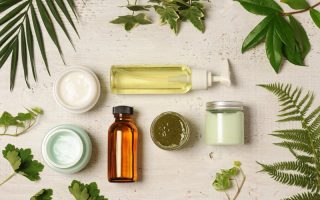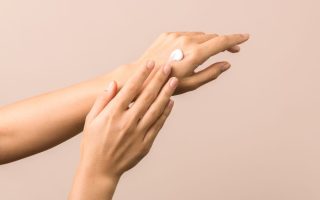Have you ever wondered what SPF really means? You see it on sunscreen bottles, but do you know how it works? Let’s dive into the world of SPF and understand how it protects your skin from the sun.
What is SPF?
SPF stands for Sun Protection Factor. It measures how well a sunscreen can protect your skin from UVB rays, which are the main cause of sunburn. The number on the SPF bottle tells you how long it will take for your skin to burn with sunscreen compared to without it. For example, if you use SPF 30, it will take 30 times longer for your skin to burn than if you weren’t wearing any sunscreen.
How Does SPF Work?
Think of SPF as a shield, not a blanket. It’s best to apply generously and reapply often, even on cloudy days, to ensure you’re truly protected. This advice comes from Dr. Elizabeth K. Hale, a dermatologist and clinical professor at NYU Langone Medical Center (The New York Times).
SPF is just one component of sun safety. It’s crucial to remember that it doesn’t protect against all harmful UV rays. Seeking shade, wearing protective clothing, and avoiding peak sun hours are equally important, according to Dr. David Leffell, a professor of dermatology at Yale School of Medicine (The Journal of the American Academy of Dermatology).
Why is SPF Important?
Using sunscreen with SPF can help prevent sunburn, skin damage, and even skin cancer. A study published in “The Journal of the American Academy of Dermatology” in 2019 found a strong link between regular sunscreen use and a lower risk of skin cancer. Another study in “Photochemistry and Photobiology” in 2020 showed that SPF helps protect against DNA damage caused by UV rays, which can lead to skin cancer.
How to Choose the Right SPF
When choosing a sunscreen, look for one with broad-spectrum protection. This means it protects against both UVA and UVB rays. UVA rays can cause long-term skin damage and aging, while UVB rays cause sunburn. Dr. Maryann Mikhail, a dermatologist and director of the Miami Dermatology and Laser Institute, explains that the number on the SPF bottle signifies the length of time it takes for your skin to burn with sunscreen versus without (Health Magazine).
How to Apply Sunscreen
To get the most out of your sunscreen, follow these simple steps:
- Apply Generously: Use about one ounce (a shot glass full) to cover your entire body.
- Reapply Often: Reapply every two hours, or more often if you’re swimming or sweating.
- Don’t Forget: Cover all exposed skin, including your ears, neck, and the tops of your feet.
Personal Experience with Sunscreen
I remember a family beach trip when I was a kid. My mom made sure we all wore sunscreen, but I didn’t reapply it after swimming. By the end of the day, I was as red as a lobster! That painful experience taught me the importance of reapplying sunscreen regularly.
Common Myths About SPF
Myth 1: Higher SPF Means Better Protection
While higher SPF offers more protection, the difference isn’t as big as you might think. SPF 30 blocks about 97% of UVB rays, while SPF 50 blocks about 98%. No sunscreen can block 100% of UV rays.
Myth 2: You Don’t Need Sunscreen on Cloudy Days
Up to 80% of UV rays can penetrate clouds, so it’s important to wear sunscreen even on cloudy days.
Myth 3: Darker Skin Doesn’t Need Sunscreen
People with darker skin can still get sunburned and are at risk for skin cancer. Everyone, regardless of skin tone, should use sunscreen.
Long-Term Benefits of Using SPF
While SPF is vital for preventing sunburn, it doesn’t fully address the long-term damage caused by UV exposure. Regular skin checks and preventative measures like antioxidants are essential for overall skin health, says Dr. Amy Derick, a dermatologist and founder of Derick Dermatology in Chicago (The Huffington Post).
Using sunscreen regularly can help prevent premature aging, such as wrinkles and age spots. It also reduces the risk of skin cancer, which is the most common type of cancer in the United States.
Conclusion
Understanding SPF and how to use it properly is key to protecting your skin from the sun’s harmful rays. Remember to choose a broad-spectrum sunscreen, apply it generously, and reapply often. By taking these steps, you can enjoy the sun safely and keep your skin healthy.
References
- Dr. Elizabeth K. Hale, Dermatologist and Clinical Professor at NYU Langone Medical Center, “The New York Times”
- Dr. David Leffell, Professor of Dermatology at Yale School of Medicine, “The Journal of the American Academy of Dermatology”
- Dr. Maryann Mikhail, Dermatologist and Director of the Miami Dermatology and Laser Institute, “Health Magazine”
- Dr. Amy Derick, Dermatologist and Founder of Derick Dermatology in Chicago, “The Huffington Post”
- “The Association Between Sunscreen Use and Skin Cancer Risk: A Systematic Review and Meta-Analysis,” “The Journal of the American Academy of Dermatology,” 2019
- “The Impact of Sun Protection Factor on DNA Damage and Skin Cancer Prevention,” “Photochemistry and Photobiology,” 2020




